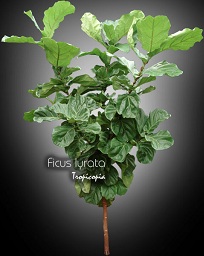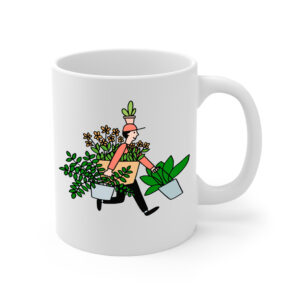Table of contents
Fidleleaf fig

Latin Name: Ficus lyrata
Category: Ficus
Family: Moraceae
Origin: Ouest Africa
Climate: Tropical
Growing Zones: 11-10
Care Instructions
The Fidleleaf fig (Ficus lyrata) is a tropical plant that originates from Ouest Africa. This ficus plant belongs to the Moraceae family and is well-suited for growing in USDA zones 11-10.
Complete Care Guide for Fiddleleaf Fig (Ficus lyrata)
Watering Requirements
The Fiddleleaf Fig, known for its large, glossy leaves, requires a careful watering regimen to thrive. It is essential to allow the top 1-2 inches of soil to dry out between waterings. Overwatering can lead to root rot, a common issue with this plant. During the growing season (spring and summer), water your Fiddleleaf Fig thoroughly, ensuring that excess water drains out of the pot’s bottom. In the fall and winter, reduce watering frequency as the plant enters a dormant phase. Always check the moisture level with your finger or a moisture meter before watering to ensure you are not over or under-watering.
Light Conditions
Fiddleleaf Figs thrive in bright, indirect light. Ideally, place your plant near a window that receives filtered sunlight. Direct sunlight can scorch the leaves, leading to brown spots and leaf drop. If natural light is limited, consider using grow lights to supplement the light conditions. A south or west-facing window is often the best choice, but be cautious of intense afternoon sun. If you notice your plant leaning towards the light source, it may be a sign that it needs to be rotated or moved to a brighter location.
Soil Preferences
The Fiddleleaf Fig prefers a well-draining potting mix that retains some moisture but does not become waterlogged. A mix designed for houseplants, combined with perlite or orchid bark, can provide the right balance of drainage and moisture retention. It is also beneficial to use a pot with drainage holes to prevent excess water from accumulating at the bottom. Fertilize your Fiddleleaf Fig during the growing season with a balanced, water-soluble fertilizer every 4-6 weeks to promote healthy growth. In the fall and winter, reduce or eliminate fertilization as the plant’s growth slows down.
Pests and Diseases
Common pests that may affect the Fiddleleaf Fig include spider mites, mealybugs, and scale. Regularly inspect the leaves for signs of infestation, such as webbing, sticky residue, or visible bugs. If you notice any pests, treat them promptly with insecticidal soap or neem oil. Additionally, Fiddleleaf Figs can be susceptible to fungal diseases, particularly if overwatered. Ensure good air circulation around the plant and avoid getting water on the leaves to minimize the risk of fungal infections. If you notice yellowing leaves or leaf drop, check for root rot and adjust your watering practices accordingly.
Special Care Tips
To keep your Fiddleleaf Fig healthy and vibrant, consider the following special care tips: First, dust the leaves regularly with a damp cloth to keep them clean and allow for optimal photosynthesis. This also helps prevent pests from settling on the leaves. Second, be mindful of temperature fluctuations; Fiddleleaf Figs prefer temperatures between 60°F and 75°F (15°C to 24°C) and should be kept away from drafts, heaters, and air conditioning vents. Lastly, if your plant becomes too tall or leggy, consider pruning it to encourage bushier growth. Always use clean, sharp tools when pruning to prevent damage to the plant.








